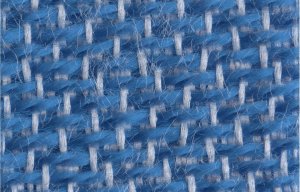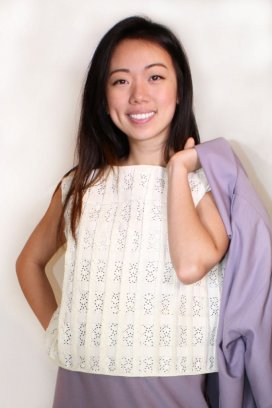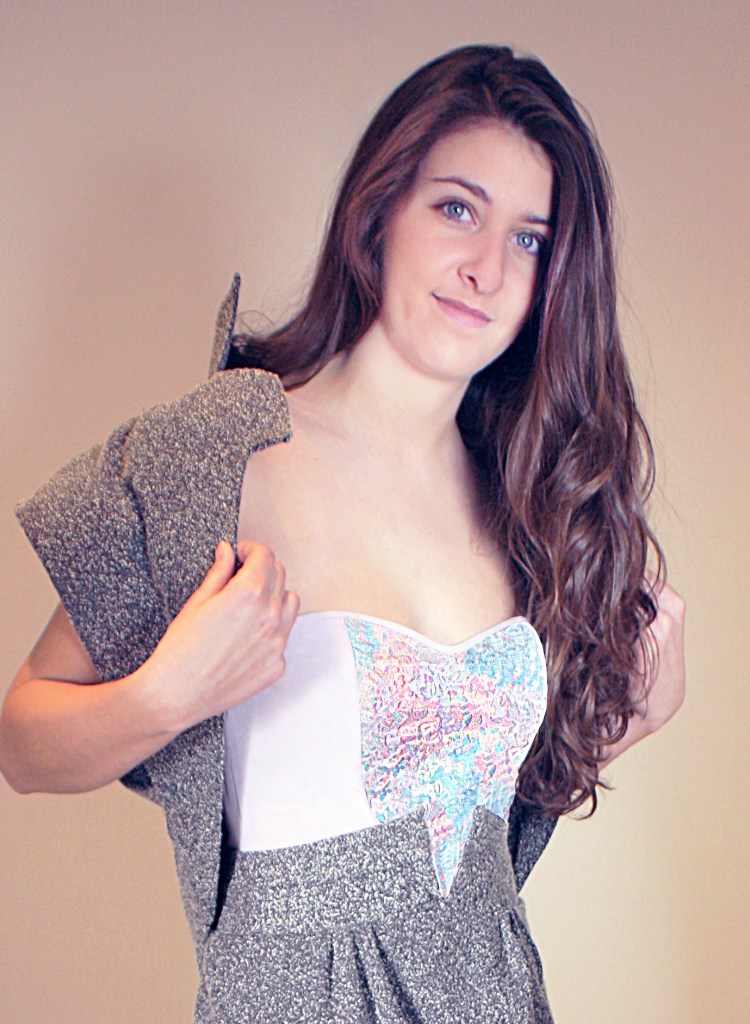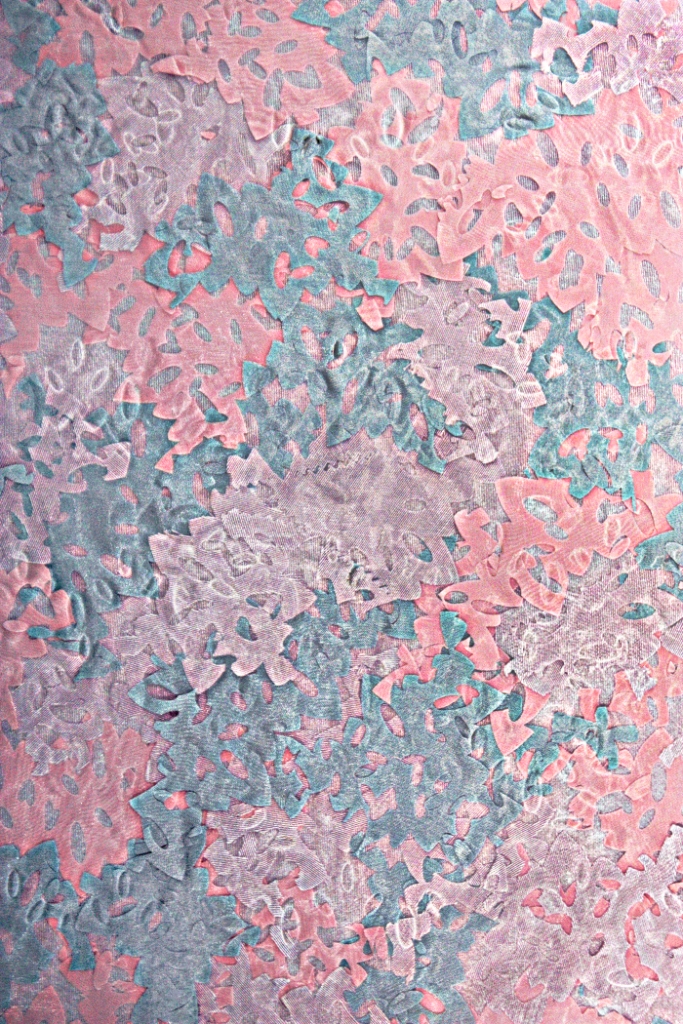
Digital technology weaves its way into custom design
When Cornell University fashion design students were assigned to create open-jacketed suits from fashion fabrics, the added challenge was to use Sonobond’s SeamMaster High Profile ultrasonic ‘sewing machine’ to develop original fabrics for the blouses or tops beneath.

23rd May 2013
Innovation in Textiles
|
Ithaca, NY
When Cornell University fashion design students were assigned to create open-jacketed suits from fashion fabrics, the added challenge was to use Sonobond’s SeamMaster High Profile ultrasonic ‘sewing machine’ to develop original fabrics for the blouses or tops beneath.
With the Sonobond machine enabling students to streamline cutting, embossing and creating other decorative effects normally achieved through traditional time and labour intensive methods, the results were spectacular.
I'm continually amazed at how students produce original and imaginative designs by combining the SeamMaster’s different pattern wheels with a variety of fabrics to achieve precise and beautiful three-dimensional effects,” says Anita Racine, Ph.D., senior lecturer for the Fashion Design program at Cornell.
This year, each of the 14 sophomore fashion design majors in the semester-long, intermediate-level patternmaking course used the SeamMaster to create a yard of one-of-a-kind fabric for their final project designs.
Ultrasonic bonding occurs when high frequency electrical energy – converted to acoustical, mechanical vibrations and channelled through a horn – creates a rapid heat build-up at the material contact point. This causes the material to melt and fuse between the horn and rotating pattern wheel of the bonder. For successful ultrasonic bonding, fabric must be at least 60% synthetic.
According to Sonobond, students appreciate the creative and functional versatility of the SeamMaster machine, which operates like a typical industrial sewing machine but does not require thread or adhesives. Pattern wheels can produce different effects ranging from a feminine, to a modern or edgy look depending on a fabric’s sheerness, drape and surface characteristics without worry of fraying or unravelling.
Before developing yardage for their designs, each Cornell student received a two-hour basic training and practice session on the Sonobond SeamMaster High Profile Ultrasonic Bonder, which is most often used to assemble functional apparel – primarily medical or protective garments – and industrial products. Students went on to experiment with a variety of pattern wheels and fabrics, producing 30 different samples.

In creating fabric for this year’s final project, one student used several pattern wheels to produce abstract ‘scalloped’ pieces in tri-coloured satin twill fabrics. The pieces were then layered for a three-dimensional ‘confetti’ effect, attached to fusible webbing and covered with sheer organza to soften the overall look.
Another student used three pattern wheels to make a unique blouse fabric: one to fashion ribbon strips, a second to create delicate cutwork, and the third to straight-stitch the pleated cutwork in place. The ribbons were then hand-woven through the cutwork to achieve a multi-layered effect.
Cornell fashion design students were first introduced to the Sonobond machine in 2007. Prior project assignments have included using the SeamMaster to assemble two-piece cocktail and evening ensembles, as well as fibre and wearable art designs.
Sonobond says the SeamMaster has now proven so useful and has been so enthusiastically received by students – who now refer to using the machine as ‘Sonobonding’ – that it’s a continuing feature of the intermediate-level patternmaking course.

It’s also used by upper class and graduate students, as well as faculty members, for fashioning functional or decorative details – for example, spaghetti straps, appliqués, decorative flowers and pin tucking – assembling active wear and other apparel, and finishing garment edges, especially voluminous hems on sheer fabrics.
But students find it most helpful for stretching their imaginations in creating decorative surfaces and edgework. One student commented, “As a designer I find the most powerful messages in artwork and fashion are those found in the details. The Sonobond machine helps me to focus my attention on details.”
Students’ designs created with the SeamMaster are shown in the annual Cornell Fashion runway show, placed in various gallery displays, and entered in design competitions that encourage the use of innovative technologies. The students’ SeamMaster-created final projects will also become part of their professional portfolios for seeking industry internships and positions after graduation.
Even after six years of use, Cornell’s SeamMaster has consistently been a low-maintenance, high-production machine requiring only simple routine check-ups by the Fiber Science & Apparel Design department’s lab technician. Plus, to students’ benefit, the department now has 30 SeamMaster pattern wheels, some of which were developed exclusively for Cornell by fashion design faculty working with Sonobond engineers.
“With each new pattern wheel added to our collection, the creative possibilities of this machine are vastly expanded. The potential is clearly endless,” says Dr. Racine. She notes, “We enjoy producing new fabric designs with the SeamMaster and have coined a new word. When reviewing prospective fabrics for designs, we ask, ‘Is it Sonobondable?’”
Sonobond is a leader in the application of ultrasonic welding and bonding technology. In 1960 Sonobond, then known as Aeroprojects, received the first patent ever awarded for ultrasonic metal welding. During the intervening 53 years, Sonobond has earned an outstanding reputation for its pioneering work and quality-engineered products. Today, Sonobond manufactures a complete line of ultrasonic bonding and welding equipment for a wide variety of customers in the automotive, appliance, electrical, HVAC, ballistics, aerospace, filtration, medical, and apparel industries.

Business intelligence for the fibre, textiles and apparel industries: technologies, innovations, markets, investments, trade policy, sourcing, strategy...
Find out more